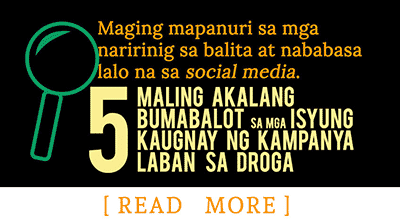Buenavista: will it be again?
For the people in Manila who work in Makati and commute via the MRT from the North, you get greeted “Buendia,” just before you reach Ayala Station.
Buendia is a name, yes, but it also means good morning in Spanish (Buenas Diaz). Buenavista, therefore, means something along the lines of good, if not scenic, view. There are places called that because they really boast breath-taking scenery.
The Municipality of Guiuan in Samar is a host to live paintings only nature can offer us humans to experience. In fact one of its islands, Manicani, is a home to a community called “Buenavista.”
Barangay Buenavista is a coastal barangay that stretches upland. Have the patience to climb and you will be treated to the panorama above: I am without words to describe its beauty.
But that’s another story—and that’s another photo. Uncropping it, you will see the whole picture below.
1) The whole picture
[[IMAGE HERE]]
The above photo shows part of site where Hinatuan Mining Corporation has mined for years. DENR has suspended their mining operations more than ten years ago. You would expect grasses to start growing after such long time. Unfortunately, that’s not the case now.
2) Brown, barren, and broken
[[IMAGE HERE]]
Fissures, gaping pits, and barren laterite stretch far and deep. Manicani islanders recounted that this area used to be filled with fruit-bearing trees, root crops, and various endemic species of trees that housed birds and other living creatures.
At present, not even carabao grass or pioneer trees, such as Ipil-ipil and the likes can spring to life on the huge mess the irresponsible extraction has done.
3) Specks of metallic dust
[[IMAGE HERE]]
Decades ago, the mining company eyed Manicani’s rich deposit of nickel ore. Over the years they drilled the upland area to obtain the precious mineral. It did not take long for the ill effects of mining in the island to take form. Soon, more and more people end up working for the mining company, because they cannot plant healthy crops anymore. People were able to have jobs, but mostly these were contractual. Despite mining being in operation for several years, the island did not prosper.
4) Broken pieces
[[IMAGE HERE]]
Through voluntary work, the islanders of Manicani have had long ago built their street roads such as this one. These were made of concrete slabs from old structures. The road has its character of cobbled stones in magnified form. It is one of the features I loved about the island: the hard work of cooperating Waray people instilled in basic infrastructure the community use everyday When mining arrived, several of these roads were crushed. Until now, these were not repaired. When it rains, the hazard brought by the rush of muddy water and the shards of broken road slabs endangers children who go to school everyday.
5) Can hope still spring?
[[IMAGE HERE]]
Manila’s Auxiliary Bishop, Most Rev. Broderick Pabillo has trekked several kilometers upland to where the pits and ore piles were. Upon arrival, the Bishop, PMPI board members, partners, and staff were greeted by several groups who have different stand on the mining activities in the island. “I believe in the people,” Bishop Pabillo said. “I feel the sincerity in their heart to bring livelihood to their community and families. I also believe that destroying their home is not the option.” The Bishop expressed hope in not just bringing back the ecosystem services of the remaining productive areas of the island. He also said that he prays and is hopeful of people’s unity. “More than anyone, the community knows what they really need and it is not destroying the environment in exchange for a short-time livelihood,” he said.
6) Welcome to Manicani
[[IMAGE HERE]]
“When Yolanda struck the island, even our houses were blown away: everything we have were blown away,” said ate Becky, a leader of Save Manicani Movement (SAMAMO), a group that campaigns the island’s protection. She added that what they have left was the island, and right now their island does not look “healthy.” “If we have trees to protect and provide us with what we need, we would not have gone hungry,” she said. “These intruders do not see our sentiments. We are in an isolated island. They will get rich drilling holes here. We will be given small change for labor, then nothing more. They will leave us with nothing, and may even cost us our island home. Yolanda may even be a kinder storm compared to mining.”
Up to this day, the community composed mostly of relatives, are torn on the issue of mining. People may take different stand on whether mining is good or not for the people. But one thing is certain: the damage it has done and will do to the environment is irreversible.

